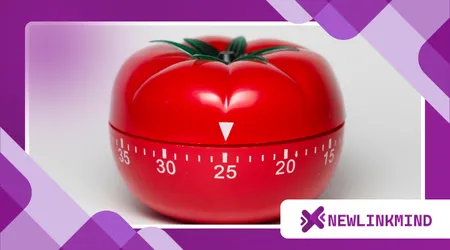Mindfulness Techniques for High-Stress Jobs

Mindfulness Techniques for High-Stress Jobs offers a proven pathway to maintain clarity and calm amidst the chaos.
Anúncios
The relentless pace of modern professional life, particularly in demanding fields like finance, healthcare, or technology, often leaves professionals feeling perpetually tethered to their work.
This persistent pressure demands more than just endurance; it requires strategic, mental fortification. Learning to manage this intensity isn’t a luxury; it’s a fundamental career skill.
The Silent Erosion of Unmanaged Stress
High-stress environments are not just emotionally draining; they pose tangible threats to cognitive function.
Unmanaged stress chips away at our capacity for focused decision-making and creative problem-solving. It’s a subtle, yet profound, inhibitor of peak performance and overall well-being.
Anúncios
The constant state of “fight or flight” inherent in these roles overloads the nervous system.
This sustained hyper-arousal leads directly to burnout, diminishing both personal and professional effectiveness. A proactive approach to mental hygiene is absolutely essential.
Foundational Pillars of Workplace Presence
Cultivating mindfulness starts with simple, deliberate anchors to the present moment.
Anúncios
These practices are not time-consuming additions to your day, but rather seamless integrations. They act as momentary resets, keeping your mind agile and responsive.
One of the simplest yet most effective tools is the 3-Minute Breathing Space.
This technique involves briefly pausing, acknowledging your current experience, gathering your focus on your breath, and then expanding your awareness outward before returning to your task.
It’s an instant cognitive refresh.
Anchoring Attention: Practical Techniques for the Desk
Many employees struggle to step away, believing they lack the time for formal meditation.
The key is to integrate mindfulness into existing routines and moments. Use transitions as opportunities for mental calibration.
Read more: Using Meditation to Overcome Fear of Public Speaking
For instance, before opening a challenging email or starting a major meeting, take two deep, deliberate breaths.
This small ritual breaks the pattern of reactive urgency and inserts a moment of considered response.
Another powerful technique is Mindful Typing or Note-Taking. Pay complete attention to the physical sensation of your fingers on the keyboard or pen on paper.
This grounding exercise shifts focus from the content’s stress to the physical process.

The Power of Single-Tasking in a Multi-Task World
The myth of efficient multitasking is a significant contributor to stress.
Trying to juggle multiple complex tasks simultaneously fragments attention and degrades performance. True productivity stems from focused, sustained effort.
See how interesting: How to Stay Present During a Hectic Workday
Intentionally committing to one task for a set period, even if only 20 minutes, is a radical act of mindfulness.
This dedicated focus enhances quality and dramatically reduces the feelings of overwhelm often associated with high-pressure deadlines.
Decoupling Emotion from Action: The “STOP” Method
When an intense professional moment triggers a powerful emotional response, the traditional advice to “calm down” often fails. A more effective strategy is the “STOP” technique:
| S | Stop | Pause exactly where you are and cease all activity. |
| T | Take a Breath | Take one conscious, deep, abdominal breath. |
| O | Observe | Acknowledge thoughts, feelings, and body sensations without judgment. |
| P | Proceed | Choose the next action with intention, not reaction. |
This method is an immediate circuit breaker for emotional cascades, ensuring your professional response remains measured and strategic.
The Clarity of the Deep Ocean
Consider your mind under stress as a turbulent, choppy sea surface. Decisions made from this superficial level are often erratic and reactive.
Mindfulness Techniques for High-Stress Jobs allow you to drop anchor to the calm, deep ocean floor.
Read here: Chair Yoga vs. Traditional Yoga for Seniors: Which is Best?
From that place of stillness, you can observe the surface storm without being capsized by it. This profound internal stability is the true competitive edge in any high-stakes career.
The Trader’s Pause Mindfulness Techniques for High-Stress Jobs
An equity trader, facing volatile market fluctuations, consistently uses a five-second mindful pause after executing any large trade, regardless of the outcome.
Instead of immediately tracking profit or loss, she focuses on the sensation of her feet on the floor.
This tiny ritual prevents the “highs” and “lows” from dictating her emotional state, allowing her to approach the next decision with a clear, unbiased perspective.
The Surgeon’s Sensory Check
Before a delicate, hours-long operation, a surgeon practices a brief sensory check.
She mentally notes the feeling of the sterile gloves, the weight of the instruments in her hand, and the distinct smell of the operating room.
This deliberate grounding in the physical reality of the moment ensures her mental state is fully present and eliminates any residual personal worries or distractions.

The Undeniable Professional Impact
The integration of Mindfulness Techniques for High-Stress Jobs is empirically supported, not merely anecdotal.
A 2023 study published in the Journal of Occupational and Environmental Medicine indicated that participants who engaged in regular workplace mindfulness practices showed a 38% reduction in self-reported emotional exhaustion symptoms often linked to professional burnout.
This is hard data supporting a soft skill.
It begs the question: Can we truly afford not to invest in the mental resilience of our highest-performing employees?
Sustaining the Practice and Finding Your Fit Mindfulness Techniques for High-Stress Jobs
Consistency, not intensity, defines successful mindfulness. Finding a technique that genuinely resonates is vital.
For some, it might be a five-minute walking meditation during a lunch break; for others, it’s a silent moment of appreciation before leaving the office.
Remember, mindfulness is not about emptying the mind; it is about bringing a non-judgmental awareness to whatever is already present.
This acceptance of reality, rather than a battle against it, is the core of mental resilience.
Mastering Mindfulness Techniques for High-Stress Jobs transforms unavoidable pressure into purposeful, manageable energy.
Frequently Asked Questions
Is workplace mindfulness the same as taking a nap or a break?
No. A break is a change in activity; mindfulness is a change in mental state. It’s about consciously engaging with the present moment during work, not escaping it.
How quickly can I expect to see results from these techniques?
Immediate, small benefits, like a feeling of momentary calm, can be felt right away.
Significant, lasting improvements in stress response and focus usually develop after 6-8 weeks of consistent, daily practice.
Do I need special equipment or a quiet room for these practices?
Absolutely not. The most powerful techniques, like the 3-Minute Breathing Space or Mindful Typing, require nothing more than your intention and the environment you are already in.
